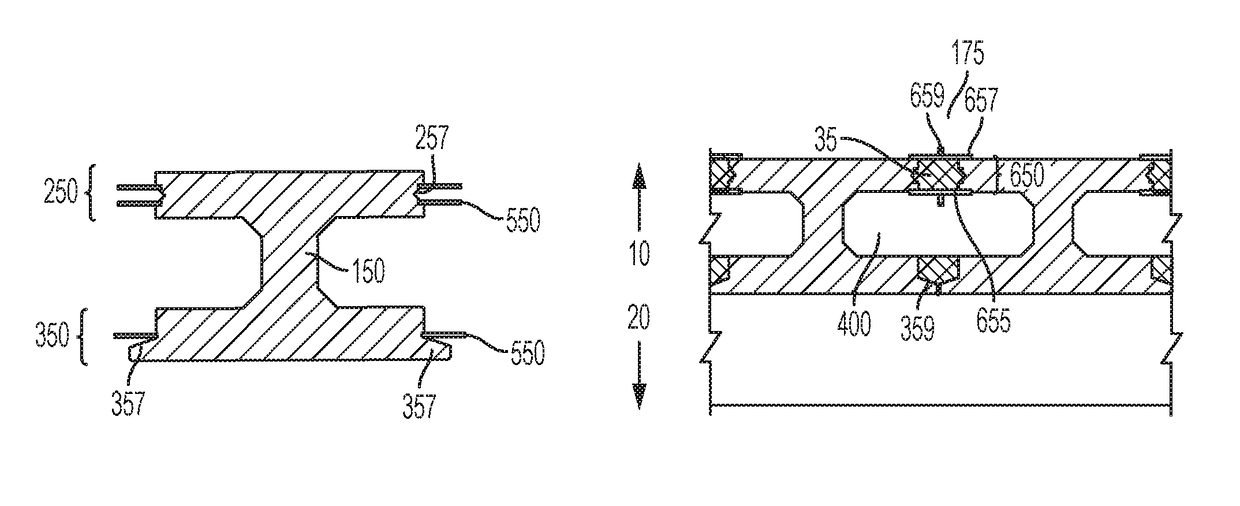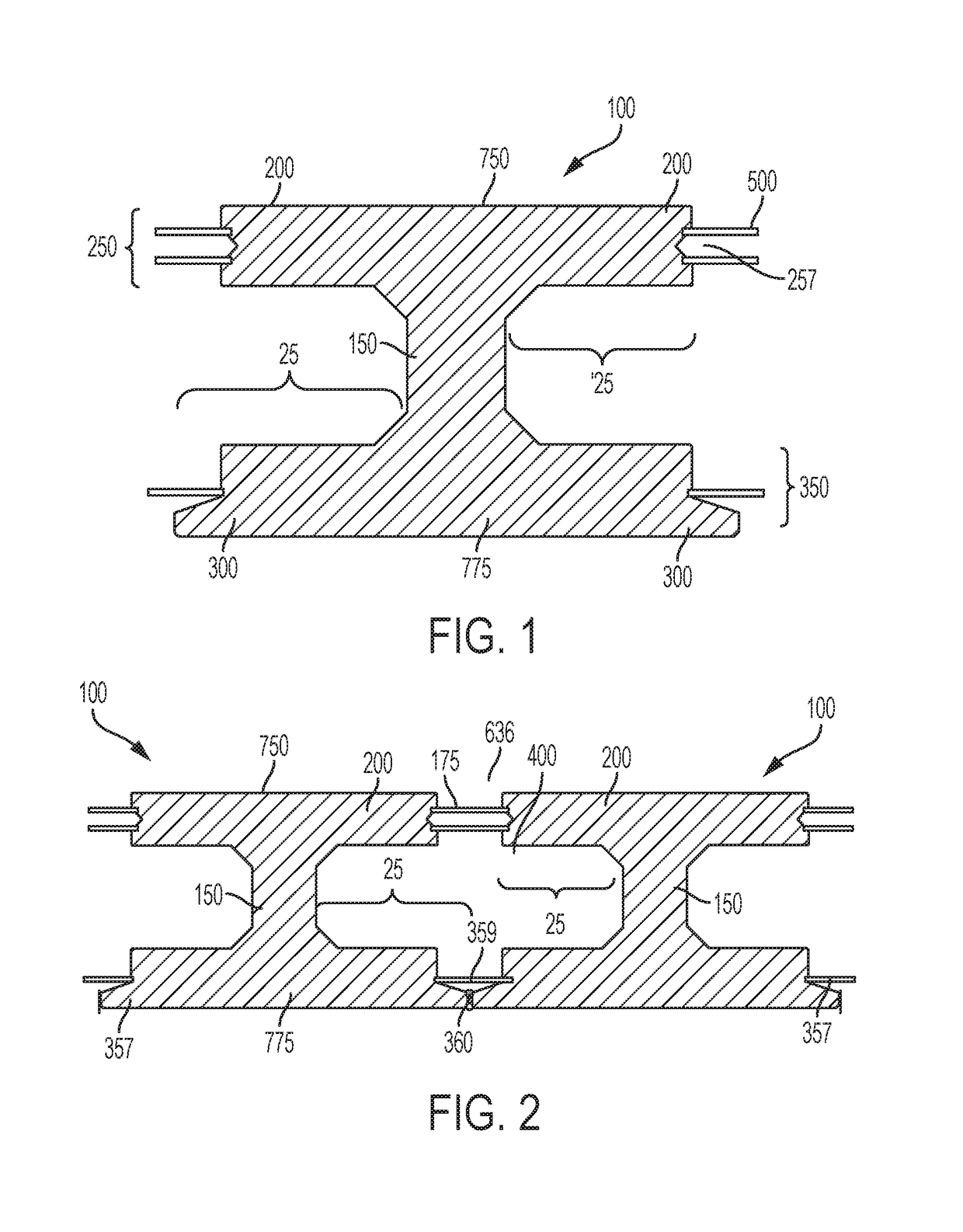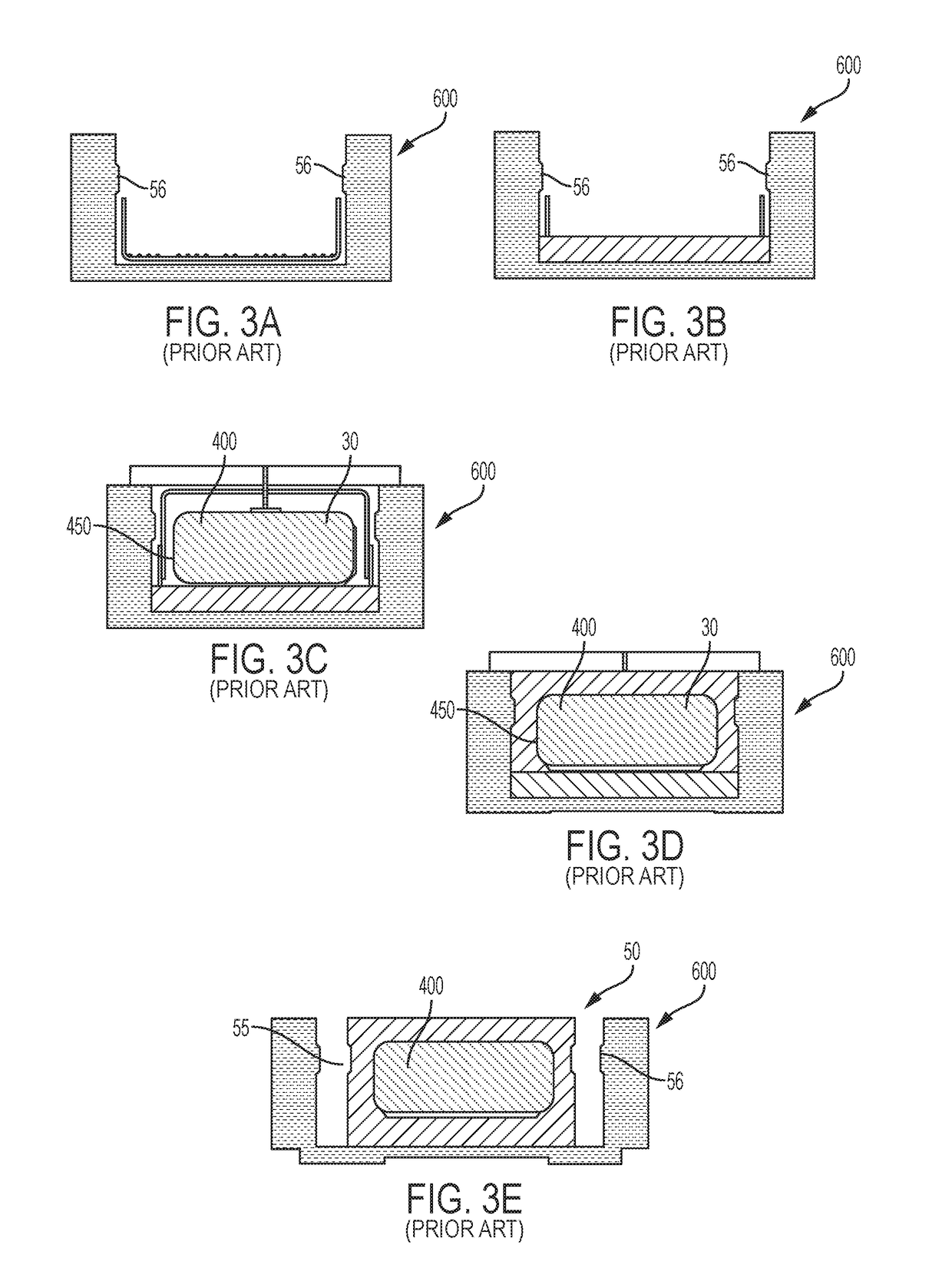Concrete i-beam for bridge construction
a technology of concrete ibeams and bridges, which is applied in bridges, bridge erection/assembly, and bridges. it can solve the problems of changing the strength of the beam, the inability to do post-cast inspection of the interior the small cracks and fractures of the box beam, so as to improve the accuracy and precision of the beam dimensions, and the risk of cracking is reduced
- Summary
- Abstract
- Description
- Claims
- Application Information
AI Technical Summary
Benefits of technology
Problems solved by technology
Method used
Image
Examples
Embodiment Construction
[0026]The subject invention provides methods and devices for casting and joining beams that can be used to build structures, particularly short- and mid-span bridges. More specifically, the subject invention provides one or more beam embodiments with flanges. The beams can be placed adjacent to each other and joined at the flanges to form a superstructure. Alternatively, other structures or components, such as pre-cast panels, can be placed on, and joined to, the beams to create a superstructure.
[0027]The structure of the joined beams can be used similarly to standard box beams. Advantageously, the joined beams can provide an interior void, like a box beam, but that is not filled with a foam core and allows for full post-cast inspection, unlike standard box beams. Grout material, such as, for example, ultra-high performance concrete (UHPC) can be used to join the beams to minimize cracking and separation.
[0028]The subject invention is particularly useful in the field of bridge const...
PUM
 Login to View More
Login to View More Abstract
Description
Claims
Application Information
 Login to View More
Login to View More - R&D
- Intellectual Property
- Life Sciences
- Materials
- Tech Scout
- Unparalleled Data Quality
- Higher Quality Content
- 60% Fewer Hallucinations
Browse by: Latest US Patents, China's latest patents, Technical Efficacy Thesaurus, Application Domain, Technology Topic, Popular Technical Reports.
© 2025 PatSnap. All rights reserved.Legal|Privacy policy|Modern Slavery Act Transparency Statement|Sitemap|About US| Contact US: help@patsnap.com



